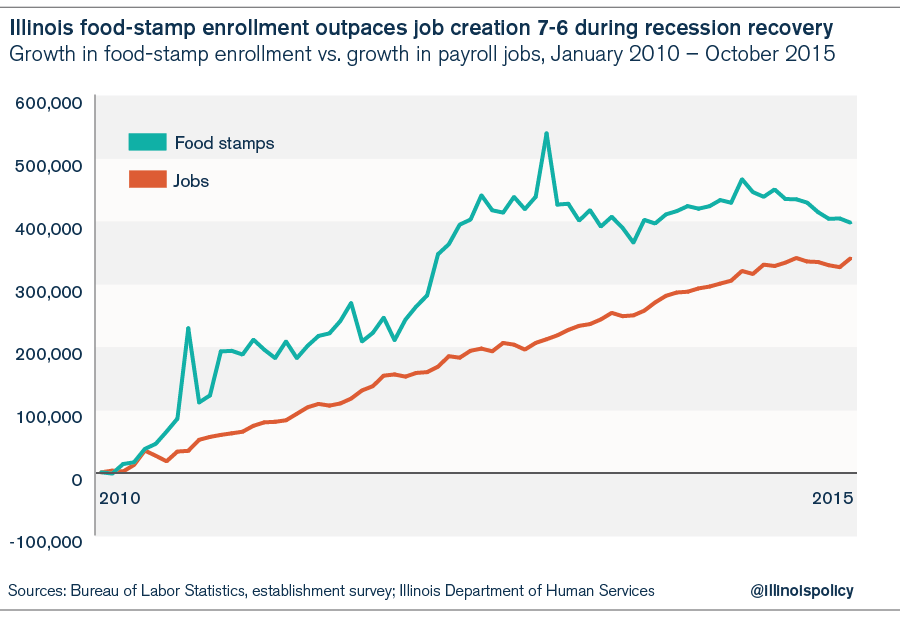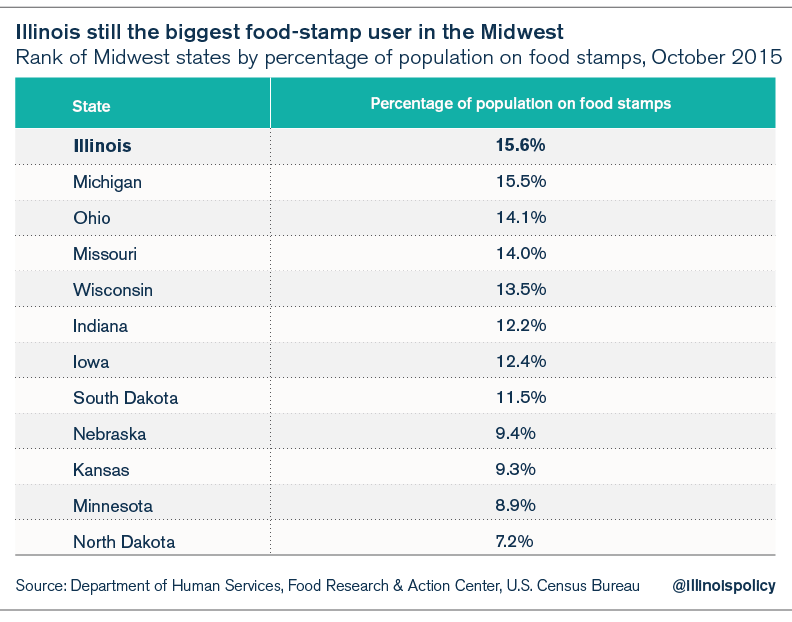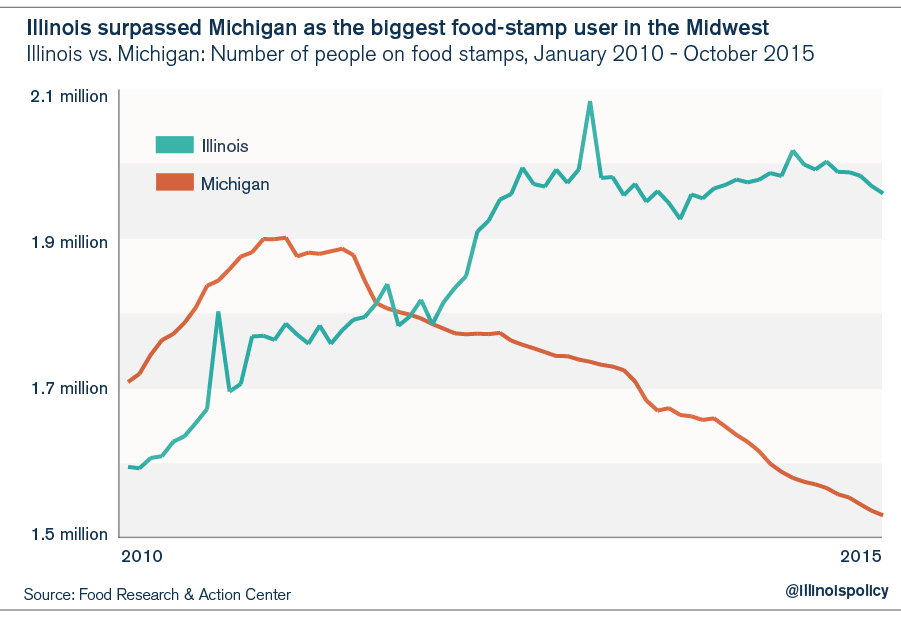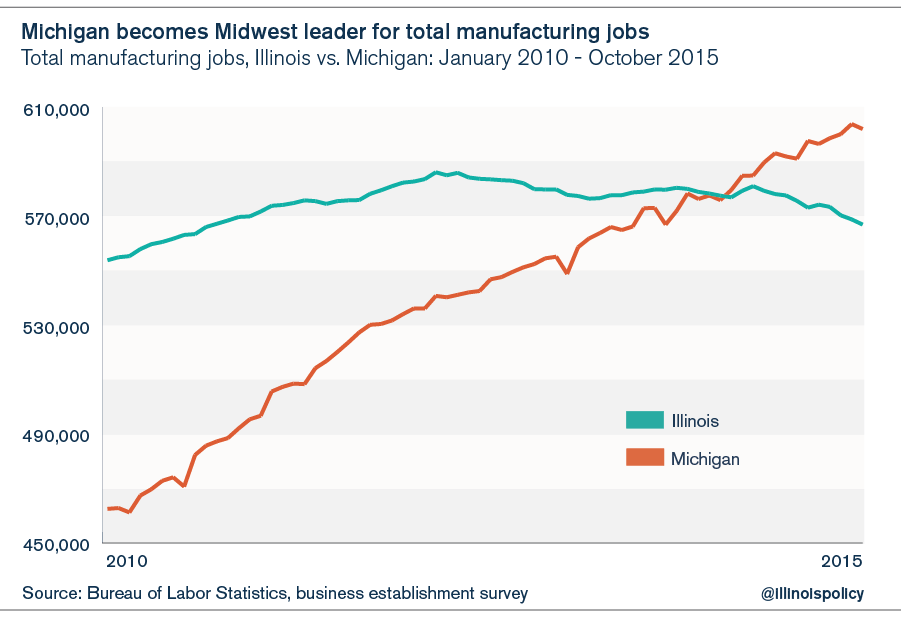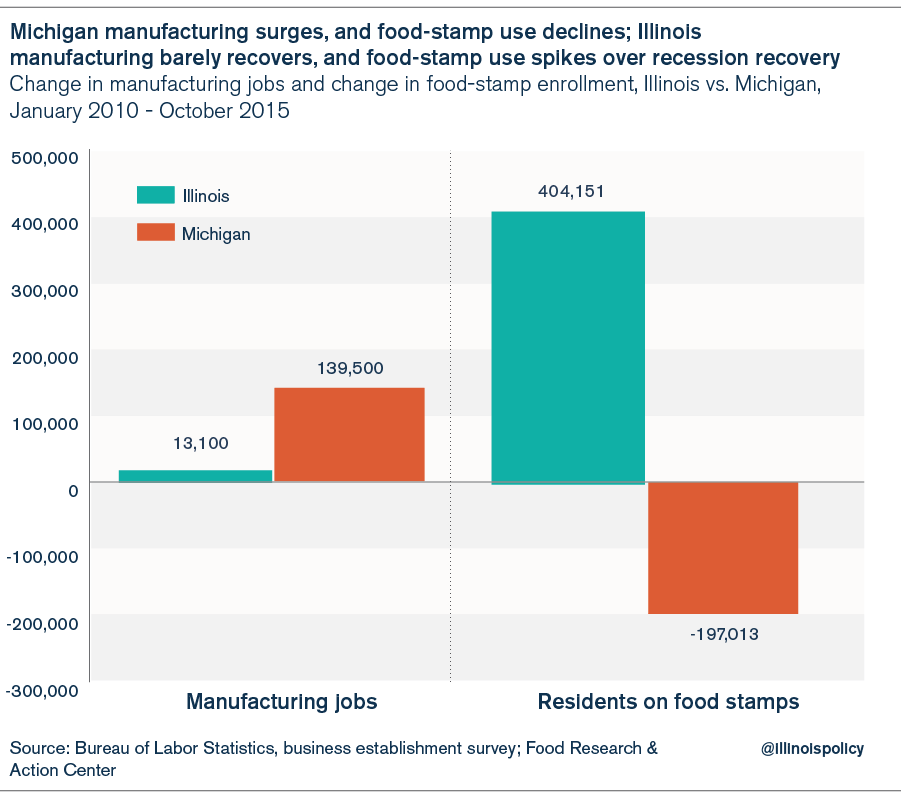Food-stamp rolls still trump payrolls in Illinois
During its recovery from the Great Recession, Illinois has put seven people on food stamps for every six people added to employment rolls.
As 2015 comes to an end, Illinois remains the only state in the Midwest to have added more people to food-stamp rolls than to employment rolls during the recovery from the Great Recession. At year’s end, after nearly six full years of recovery from the Great Recession’s job losses, food-stamp enrollment still outpaces job creation in the Land of Lincoln. Illinois has added 340,000 jobs on net since the recession bottom in January 2010, while food-stamp enrollment has increased by 400,000 in the same period.
Food-stamp growth in Illinois has outpaced job creation by a 7-6 margin through October 2015, the most recent month of data for both metrics.
The lone bright spot is that in November 2015, Illinois reported having fewer than 2 million residents on food stamps for the first time since February 2014. Food-stamp enrollment dropped by 90,000 in the first 11 months of 2015.
Despite this small decrease in enrollment, in May 2015, Illinois surpassed Michigan as the Midwestern state with the highest portion of its population dependent on food stamps.
During the recovery since January 2010, the number of Illinoisans on food stamps increased by 400,000 people. Meanwhile, the number of Michiganders on food stamps decreased by 200,000 over the same time period.
Why such a big difference? One reason is that middle-class manufacturing jobs have been recovering in Michigan, while Illinoisans have barely seen a manufacturing-jobs recovery. Since January 2010, Illinois has gained 13,000 manufacturing jobs on net, while Michigan has added a net of 140,000 manufacturing jobs over the same time period. More manufacturing Michiganders means fewer blue-collar workers on food stamps. Fewer manufacturing jobs in Illinois means more Illinoisans dependent on government for basic necessities.
In short, Michigan continues to build on a recovery from the Great Recession, while Illinois workers have to worry about job security month after month. Since January 2010, the Wolverine State has added 140,000 manufacturing jobs on net and seen 200,000 people drop off the state’s food-stamp rolls. Illinois has not had such a recovery. The Land of Lincoln has seen a net gain of only 13,000 manufacturing jobs during the recovery, while food-stamp rolls have swelled by 400,000.
Illinois’ lack of jobs growth, especially in blue-collar industries, has driven more and more Illinoisans to dependency on government, while residents of other Midwestern states join the ranks of the employed and leave the food-stamps program.
Instead of adopting policies that would put people back to work, Illinois politicians have raised taxes and increased regulations, thus contributing to Illinois’ slow jobs growth and increased government dependency – particularly when contrasted with the success of its neighbors. This demonstrates the importance of economic reform and job creation. Gov. Bruce Rauner’s legislative agenda, which addresses Illinois’ top economic reform needs, includes tax and regulatory reforms to address Illinois’ economic problems:
- Reforms for the costliest workers’ compensation system in the Midwest, which drives away blue-collar jobs
- A tax freeze and reforms to fix Illinois’ property taxes, which are the highest in the Midwest
- Lawsuit reform for the worst-ranked litigation climate in the Midwest
Illinois must kick-start the state’s moribund economy to make an independent and prosperous future possible for more of its working-class families.

